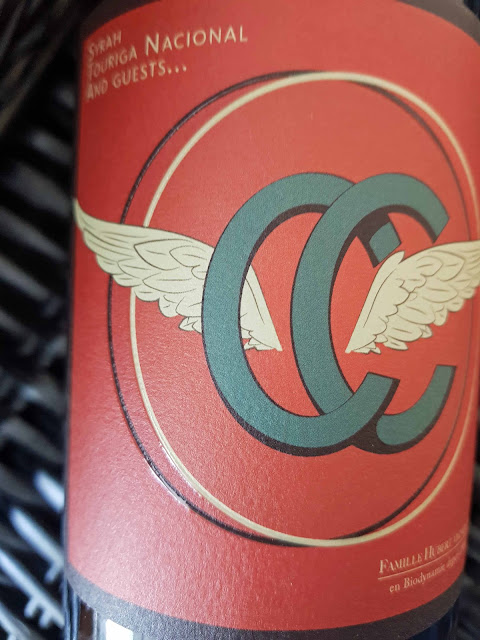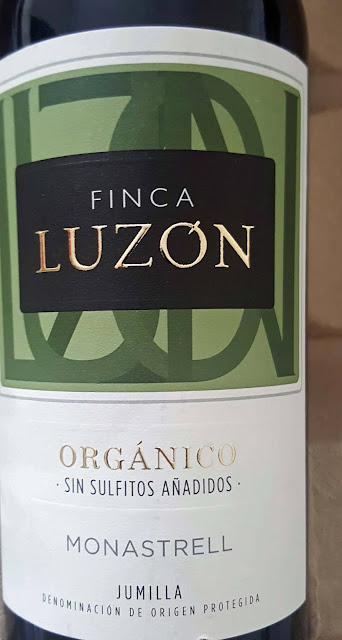From the heights of Jumilla and the banks of the Gironde,
come two Very Highly Recommended red wines.
Altamente Monastrell Jumilla (DO) 2019, 14%
€13.00 The Olive Branch, Clonakilty; Taste, Castletownbere; Quay Co-Op, Cork; Mary Pawle
Fernando Barrena, a man of Navarra, with more than 15 years of experience in wine industry as co-owner of Azul y Garanza Winery, is a key figure in this Jumilla project, “a privileged 900 meters high environment near the Mediterranean Sea, where we find Monastrell grapes at their finest".
María Ángeles Conesa, his partner in vine here, is a woman of Murcia, with roots in Jumilla. She is an agronomist and is technical manager of the vineyard and wine cellar. “For me, this is a travel back to my own land in order to produce wines that reflect the outstanding landscape where I came from."
Purple in the glass, a little lighter at the rim. Intense ripe berry fruit (lots) in the warm aromas and some garrigue notes as well. Very Mediterranean, as they say themselves: “Intense, balsamic, highly scented.”
And there’s no loss of the intensity as dark fruits hit the fresh and complex palate, with a touch of spice (paprika) there too. Firm tannins also add to the pleasant experience along with a lengthy finish. Very Highly Recommended. Great price.
One hundred per cent of the vineyards are bio certified, immersed in a beautiful landscape full of biodiversity: almond trees, olive trees, wild bushes… Only one preventive treatment with sulphur per year is enough to keep the crop healthy. You can find hares, partridges, quails, wild boars, eagles, hawks, finches, sparrows, larks here.
Azul y Garanza continues to expand its portfolio. It is now “a more complete and exciting viniculture experience with the addition of new enriching varieties, soils, climates, collaborators and wines. Wild-natured vines, full of biodiversity and astonishingly beautiful; organic and endowed with special faculties which result in one-of-a-kind wines. Wines which are a clear reflection of the place they come from.”
Famille Hubert Cuvée des “2C” Vin de France 2020, 13.5%
€25.50 New to portfolio, only in restaurants so far or Mary Pawle
Purple is the colour of the juice from this Syrah led blend from Blaye. Aromas are of red and darker fruit, gentle yet persistent. It is supple with tangy fruit flavours, easy to drink and thanks to its juicy acidity, a good companion at the table where suggestions include Petiscos (Portuguese tapas), antipasti and other nibbles but I’ve seen chicken and poultry also recommended. The wine itself is Very Highly Recommended.
Two of the four grapes used are not associated with the Blaye area, northwest of Bordeaux city on the northern side of the estuary. I’ve read that the well-known Portuguese grape, Touriga Nacional, is approved nowadays for controlled use here. That leaves Syrah, so much part of Rhone blends, as the real stranger. The blend recipe is Syrah (50%), Touriga Nacional (25%), Malbec (15%), and Merlot (10%).
They (the Huberts) say, giving two explanations for the wine’s name: Syrah and Touriga Nacional, unusual for us in Gironde but which, thanks to biodynamics, wonderfully reveal our terroir. Our identity is there, characterized by a smooth and mineral wine profile. And with one stone, we welcome (grandchildren) Camille and Colette to the family! The non-Gironde grapes account for the fact that the wine is classed as Vin de France.
The family Hubert have two chateau here: Chateau Peybonhomme Blaye Côtes de Bordeaux and Chateau La Grolet in neighbouring Côtes de Bourg. Biodynamic since 2000, double Guyot pruning, spontaneous winter grassing, soil tillage in spring. Treatments combining Bordeaux mixture in small quantities with herbal teas from plants such as horsetail and nettle are used and they are certified Organic, Biodynamic, and Vegan.

















